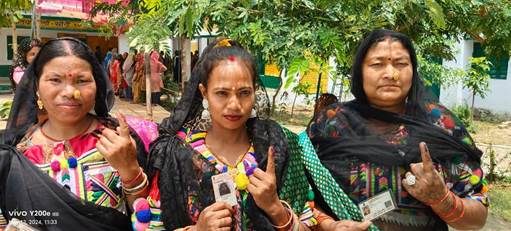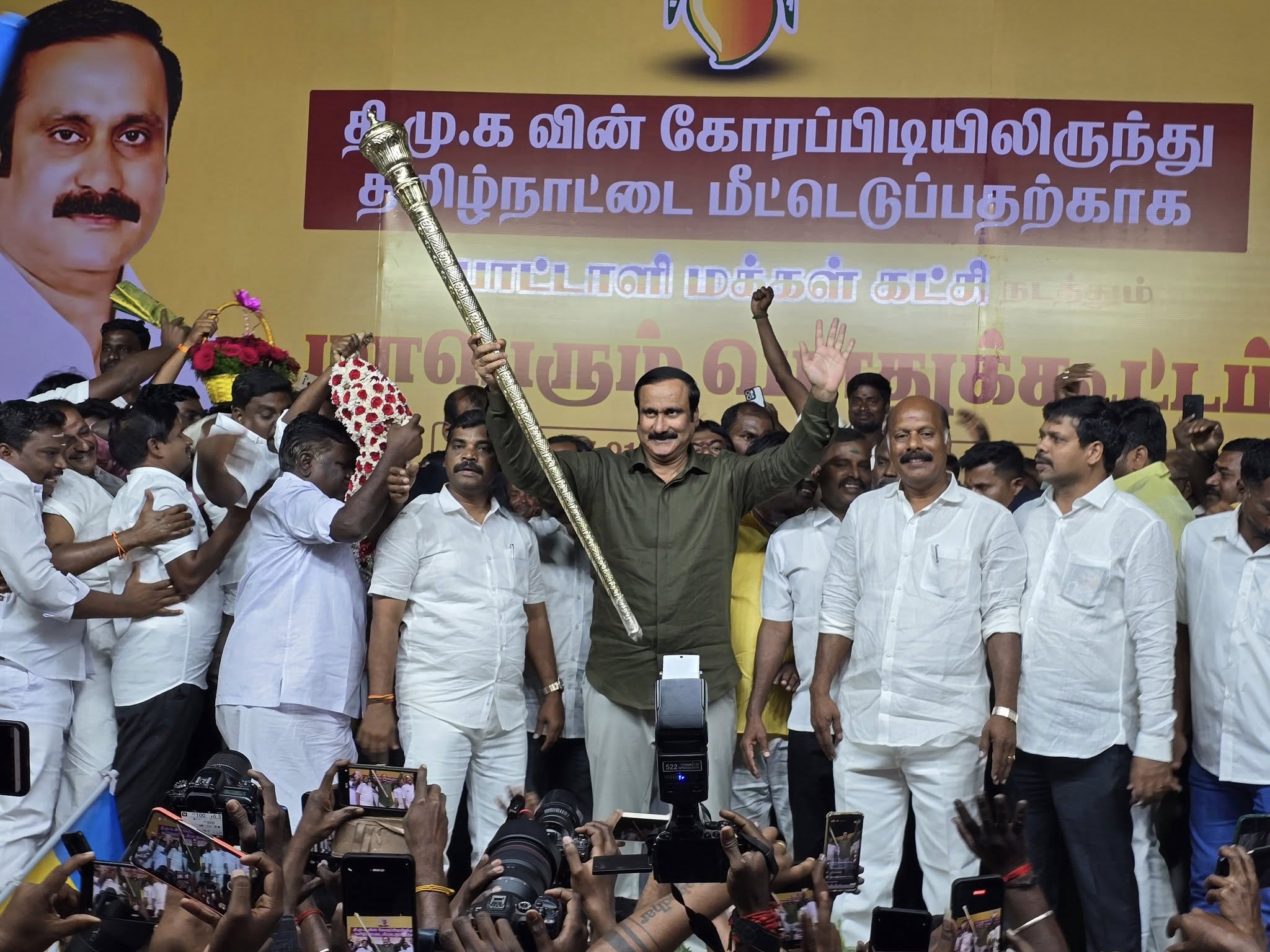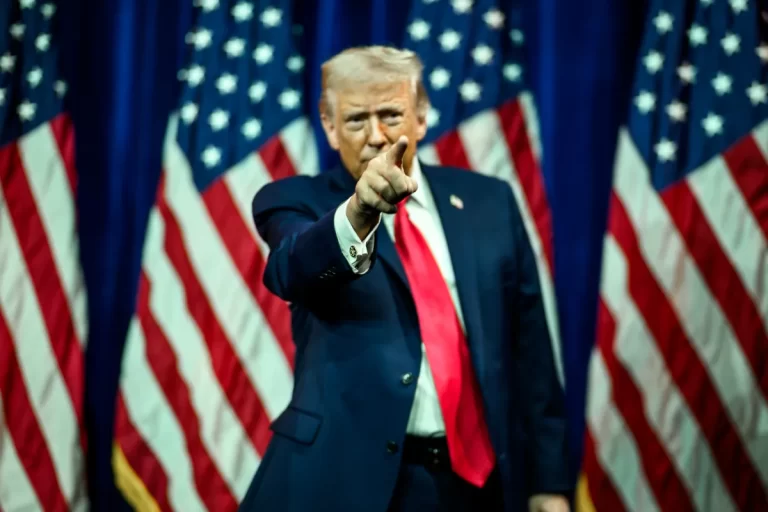
Tharu tribe in their traditional attire at a polling station in Bahraich, Uttar Pradesh. Source: ECI
New Delhi: The trend of low voter turnout in Bihar continued in the fourth phase also, with just 57 per cent of voters casting their votes in this phase in the state, while the Kashmir valley, where voting took place for the Srinagar Parliamentary Constituency today, recorded the highest turnout in decades with 37.98% voting.
With the conclusion of phase 4, polling for General Elections has crossed the halfway mark with polling completed in 23 States/Union Territories and 379 of the 543 Parliamentary Constituencies.
Already much is being speculated over the fate of the ruling Bharatiya Janata Party (BJP). While the anti-incumbency factor is being attributed to the low voter turnout this time, there is also much-speculated consolidation of the Muslim votes in favour of the Congress Party, which is being credited for the latter’s win in the Karnataka and Telangana Assembly Elections. How effective such factors could be is yet to be ascertained. But the low voter turnout is what is ostensibly at the crux of all speculations about an impending fall of Prime Minister Narendra Modi and his political party, the BJP.
The ECI’s updated figures showed a voter turnout of 66.14% in Phase 1, 66.71% in Phase 2, 65.68% in Phase 3, and 67.25% in Phase 4 of polling.
Considering that the polling figures so far are not much behind the highest voter turnout of 67.4 per cent in India’s 2019 General Elections, it would be interesting to look at the voting pattern in the previous two general elections in which the BJP’s performance catapulted it to the seat of power. However, it is still too early to get into constituency-wise details, which are capable of springing surprises.
While Bihar, which has 40 Lok Sabha seats, saw a meagre 49.26% turnout in Phase 1, 59.45% in Phase 2, and 58.18% voter turnout in Phase 3. Another large state, Uttar Pradesh with 80 Parliamentary seats, too has so far witnessed a dismal voter turnout – 61.11%, 55.19%, 57.34% and 58.05% respectively in the first four phases of the ongoing elections. The same has been the trend in Maharashtra (48 Parliamentary seats). Maharashtra saw a turnout of 63.71%, 62.71%, 61.44% and 59.64% respectively.
All these three states are considered crucial for a Bharatiya Janata Party return to power at the Centre post elections. Hence, the question arises can a low voter turnout in these states adversely impact the BJP’s prospects of forming a government at the Centre?
Significantly, Bihar saw below 60% voter turnout in the last two general elections too, but the BJP did remarkably well in the state then. The state witnessed 56.26% voting in 2014 and 57.33% voting in the 2019 general elections. Similarly, Uttar Pradesh too saw a meagre 58.35% voter turnout in 2014, and 59.21% in 2019. Maharashtra saw 60.36% voter turnout in 2014, and 61.02% voter turnout in 2019.
In these three states, the BJP had won 102 (Bihar 17, UP-62, Maharashtra 23) of the total 170 seats (not counting the seats won by its National Democratic Alliance partners), when it went on to win 303 of the total 543 Lok Sabha seats in 2019. In 2014, the BJP won (not counting its allies) a total of 116 (Bihar 22, Maharashtra 23, Uttar Pradesh 71) Parliamentary seats in these three states.
Incidentally, it was Gujarat where the BJP won all 26 seats both in 2014 and 2019. There the voter turnout was 64.51% in 2019, and 63.66% in 2014. This time, the total voter turnout in the state for 25 Parliamentary seats that went to poll in Phase 3 was 58.98%.
The other states besides Gujarat, where the BJP performed better than its rivals in 2019 were, Haryana, Delhi, Madhya Pradesh, Odisha, Karnataka and Assam. All these states collectively make 131 Parliamentary seats.
Letting aside the new political equations between the BJP and other political parties, let’s compare the 2024 voter turnout in these states with those in 2019. It may be mentioned that these states along with Bihar, Maharashtra and Uttar Pradesh, have 282 seats, and in 2019, the BJP won 215 of them!
In Haryana, the BJP won all 10 seats in 2019. The voter turnout in the state in 2019 was 70.34%. Polling is scheduled in the state in the later phase.
In Delhi, the BJP won all 7 seats both in 2014 (voter turnout 65.10%) and 2019 (voter turnout 60.6%). The elections are scheduled in the later phase here too and will the arrest of the Aam Aadmi Party leader and Delhi Chief Minister Arvind Kejriwal and his bail thereafter, dent the BJP’s victory march here is to be seen.
In Madhya Pradesh, the BJP won 28 of the 29 seats in 2019. The voter turnout in the state then was 71.2%. This year, in the first four 67.75%, 58.59%, 66.05% and 70.98%, respectively. However, this is not the final tally.
In Odisha, the BJP had won 8 of the total 21 seats while its then alliance partner Biju Janata Dal had won 12 seats in 2019. The voter turnout in the state then was 73.29%. This time in Phase 4, it was 73.97%. The remaining polling will be done in the state in the coming phases.
Assam has 14 seats and the BJP won 9 of those seats in 2019. The voter turnout in the state in 2019 was 81.6%. This time, it had been 78.25%, 81.17%, and 81.61% respectively in the first three phases before the elections in the state were concluded.
In Karnataka, the BJP had won 25 of the 28 seats in the state in 2019. However, whether the BJP still does well after losing the recent State Assembly elections here is to be seen. The voting percentage in the state in 2019 was 68.81%. This time the state saw a voter turnout of 69.56% in Phase 2 (14 Parliamentary Constituencies) and 70.41% in the third phase (14 Parliamentary Constituencies).
Leaving aside political manoeuvrings, there is not much difference in the voter turnout in these states as compared to the 2019 figures, and what is important is that this is not the final voting figure as more updates are pending from the Election Commission of India.
The ECI is yet to provide the final turnout figures, which it said will only be available post-counting with the counting of postal ballots and its addition to the total vote count. Postal Ballots include those given to service voters, absentee voters (85+, Petsons with Disabilities, Essential Services etc.) and Voters on Election Duty. Daily accounts of such Postal Ballots received, per Statutory provisions, are given to all candidates.
Incidentally, these delays in updating the figures have come under much public scrutiny.
At least three journalists’ organisations -The Press Club of India, The Press Association, The Foreign Correspondent Club, and the Delhi Union of Journalists- have raised objections. “We are shocked and surprised that the Commission has not been releasing the “absolute number of votes polled” in the last three phases,” the respective presidents of these journalist bodies stated in a letter to the Chief Election Commissioner on May 11, 2024. They pointed out that this was not the case in the past elections, and claimed these developments have led to apprehension in the minds of people about the fairness of the elections. “In this context, we demand that the ECI hold a press conference after every phase of voting. Further, we demand that the entire poll data, including the absolute number of votes polled and the final percentage of voting be released by the next day of the polling. Such transparency is necessary to uphold the voters’ confidence in the electoral system,” they demanded.
Expressing their dismay at the Commission not holding a single press conference after the completion of voting in these phases, the letter noted that till 2019, the last general election, holding a press conference after voting in each phase was the normal practice.
“It should be noted that at press conferences, the journalists get their doubts and confusions, if any, cleared which helps them report and write error-free copy for their readers. They keep the citizens accurately informed and updated on the ongoing election. The Election Commissioners can also speak directly to voters via electronic media during a press conference. We hope that you will agree to these demands and act immediately on them,” the letter stated. It further stated that India, being one of the largest democracies in the world and the general election considered the “biggest festival of democracy”, the citizens have every right to know what has happened on the voting day, from the constitutional body, the Election Commission of India. Press Release
Today another petition endorsed by more than 4000 people including transparency activists, lawyers, information commissioners, retired civil servants and concerned citizens was submitted to the Election Commission of India (ECI) demanding that the ECI disclose authenticated records of voter turnout figures as contained in Part I of Form 17C.
The petition stated: “For the first phase of elections, the ECI in its press note on the day of polling (19.4.2024) stated that as of 7 pm, the estimated voter turnout was over 60%. The voter turnout data published 11 days later by ECI on April 30th, provided a figure of 66.14%- a jump of more than 6%. Similarly, for the second phase, the press note on the day of polling (26.4.2024) stated that the approximate voter turnout was 60.96% as of 7 pm, which was subsequently revised to 66.71% in the press note of April 30, 2024. The inordinate delay in the release of voter turnout, coupled with the unusually high revision (of nearly 6%) sans any explanation in the ECI’s press note of April 30th, has raised concerns and doubts among people about the voter turnout figures.” It reiterated that the ECI had not released voter turnout figures in absolute numbers for any of the 4 phases of elections where polling has finished.
Meanwhile, the 10 States/Union Territories that went to polls in Phase 4 were Andhra Pradesh, Bihar, Jammu and Kashmir, Jharkhand, Madhya Pradesh, Maharashtra, Odisha, Telangana, Uttar Pradesh and West Bengal. A total of 1717 candidates were in the electoral fray in this phase.
The state-wise approximate voter turnout at 11:45 pm on May 13, 2024, was as below:

Overall, polling in the fourth phase of the General Elections across 96 Parliamentary Constituencies was peaceful and recorded an approximate voter turnout of 67.25% as of 11:45 pm on May 13, 2024. “The same shall continue to be updated by the field level officers as polling parties keep returning and will be available Parliamentary Constituencywise (along with respective Assembly Constituency segments) live at Voter Turnout (VTR) App, as was the case in earlier phases,” the Election Commission of India stated.
The Election Commission also stated that out of approximately 425 “major” complaints, excluding canvassing-related or clarificatory complaints, filed by various political parties and candidates, “a few complaints” of the Indian National Congress and the Bharatiya Janata Party against each other were pending alleging violation of the Model Code of Conduct “broadly in the genre of divisive statements by top Star campaigners on communal, caste, regional language divide, or sanctity of Constitution of India”. While in the past, the Commission had been issuing notices to individual leaders who had committed violations of MCC, this time, the Commission said it has adopted “a new course with its advisory dated 01st March 2024 to Party Presidents/Chairpersons/General Secretaries of all recognised political parties urging them to ask their leaders/candidates/star campaigners not to make speeches/ utterances which are in direct or indirect violation of MCC”.
In the final analysis, it implies that the game is not yet over and the remaining rounds of polling as well as the Election Commission’s moves in the face of the pressure building up on it to be more transparent, will determine the fate of the BJP and Prime Minister Narendra Modi. So wait till the end!







Exactly what I thought sir. Low voter turnout will impact BJP more than any other party. The ones who are hell-bent to see the fall of the BJP are coming out as consolidated vote bank while BJP core voters are just laid back.